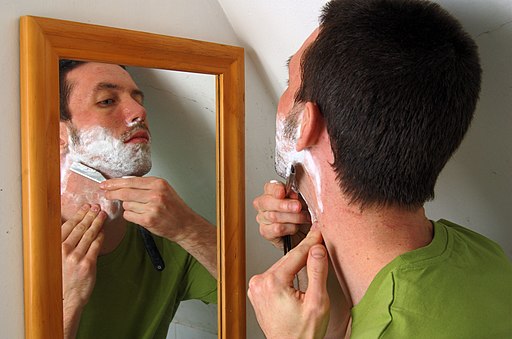Heather Callaghan
 Activist Post
Activist Post
German research shows a direct link between endocrine disrupting chemicals (EDCs) and sperm function which may negatively affect fertilization.
Some people and even researchers think we can simply adapt to more and more chemicals – especially in moderation. But there are thousands of chemicals that we ingest from packaged foods alone. When “fragrance” appears on a shampoo bottle, that word alone can comprise of another thousand chemicals that obviously cannot fit on a label. How far can this go?
Furthermore, all those previously thought to be “safe levels” we eat, drink, handle and breathe every day were completely null and void. Strangely, lower levels can be even more damaging and have been shown to harm the organs of primates.
Some people might not think much of reproductive health because they’ve either decided not to have children or their children are grown. But endocrine health (which affects reproductive health) is vital to your entire life – your energy, your sex life, your moods, your thinking – even your body’s ability to throw off the damages of daily radiation.
A German-Danish team of researchers from the Center of Advanced European Studies and Research in Bonn, Germany, and the University Department of Growth and Reproduction just had their work published in EMBO reports. They find that endocrine disruptors may contribute to widespread fertility problems in the Western world in a way never seen before.
Proving the correlation has been difficult because how do you have a control group in a world already heavily immersed in EDCs for a few generations? Bisphenol-A is just one widely known EDC. Endocrine disruptors show up in food, wheat, food packaging, on money and ATM receipts, in body care products, pesticides, dental procedure residues, cleaning products, plastics, textiles, drugs, toys, cosmetics and more. Furthermore, what EDCs get eliminated through our bodies are recycled back to us through the use of sewage sludge on conventional crop production. Lovely.
The European Commission is currently reviewing its policy on endocrine-disrupting chemicals. Last year, their plans caused a debate between endocrinologists and a group of toxicologists over how to regulate, but they seem to have a more open discussion on the lack of safety information.
Study leader Timo Strünker said:
Our study provides scientific evidence to assist forming international rules and practices.
Danish team leader Niels E. Skakkebaek said:
For the first time, we have shown a direct link between exposure to endocrine disrupting chemicals from industrial products and adverse effects on human sperm function.
 Hundreds to thousands of chemicals can be rapidly tested for their potential to interfere with human sperm function using the bioassay developed by the researchers. In this initial study, about one hundred chemicals were tested. Around one third, including ultraviolet (UV) filters like 4-methylbenzylidene camphor (4-MBC) used in some sunscreens, the anti-bacterial agent Triclosan used in many personal care items, and di-n-butylphthalate (DnBP), showed adverse actions.
Hundreds to thousands of chemicals can be rapidly tested for their potential to interfere with human sperm function using the bioassay developed by the researchers. In this initial study, about one hundred chemicals were tested. Around one third, including ultraviolet (UV) filters like 4-methylbenzylidene camphor (4-MBC) used in some sunscreens, the anti-bacterial agent Triclosan used in many personal care items, and di-n-butylphthalate (DnBP), showed adverse actions.
The scientists looked at the impact of these chemicals on the CatSper ion channel, a calcium channel controlling sperm motility. They showed that endocrine disruptors – applied at concentrations measured in body fluids – directly open CatSper and, thereby, increase calcium levels in sperm, change their swimming behavior, and trigger the release of digestive enzymes that help sperm to break through the egg coat. Moreover, endocrine disruptors render sperm less sensitive for progesterone and prostaglandins – two important hormones released by cells surrounding the egg. Finally, the authors noted that in low-dose mixtures, the chemicals cooperate to elevate calcium levels in sperm.
Altogether, the study indicates that endocrine disruptors might disturb the precisely coordinated sequence of events underlying fertilization in several ways:
- The chemicals might evoke changes in swimming behavior at the wrong time and wrong place
- Hinders navigation of sperm towards the egg
- Hampers penetration into the protective egg coat
I wrote about 7 ways to drain EDCs from the body – a naturopath and a vigilant shopping eye can help as well. The myth of “BPA-free” labels should be avoided as companies are allowed to replace plasticizers with worse ingredients under allowable regulations. It’s time to go back to more “archaic” materials like wood, glass and stainless steel. It might take awhile to feel a difference as the accumulation and effects of EDCs took awhile to build up in the first place. Allergies, brain fog, infertility, obesity, diabetes and thyroid issues from EDCs are a harsh reality that can be faced and overcome.
While I don’t believe we can just keep adapting to industrial chemical exposure – the human body is simply miraculous at repair when given the tools to detox, declog and assimilate nutrition.
Heather Callaghan is a natural health blogger and food freedom activist. You can see her work at NaturalBlaze.com and ActivistPost.com. Like at Facebook.
Recent posts by Heather Callaghan:


Be the first to comment on "Chemicals Found Everywhere Confuse Sperm, Destroy Male Health"